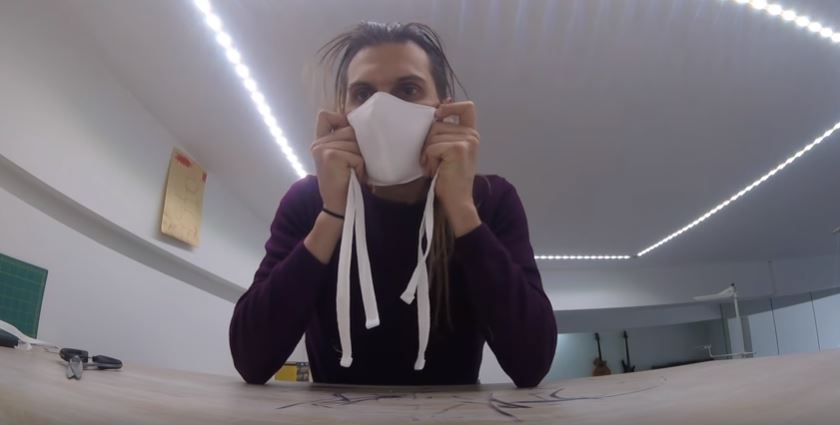

Find the pattern here, for 2 different sizes.
Below are the instructions for this mask from Freesewing.org. While this mask is immediately relevant to the Covid-19 pandemic, Freesewing.org shares files and patterns of all types. Go check them out.
materials:
- About 15 cm (6”) of a suitable fabric (see Fabric options)
- About 15 cm (6”) of lining fabric
- About 1.2 meter (4 feet) of ribbon cut in 4 equal parts
Note about cuts:
Fu only has one part, the mask. This is half of the mask, so we will need two of them. In addition, we want an outer and inner layer of fabric, so we’ll need four in total:
- Main fabricCut 2 masks parts
- Lining fabricCut 2 masks parts
If you’re using the same fabric in and out (which is fine) then simply cut 4 mask parts.












